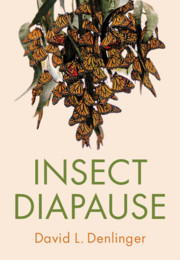Dormant line M73 wild oat caryopses were utilized to develop a system for the culture of excised embryos, to evaluate whether embryo dormancy exists, and to investigate the physiological basis for breaking dormancy. Dormant embryos cultured on N6 medium solidified with 0.25% Bacto agar displayed 70% germination in 2 d compared with approximately 20% for the other gelling agents. The non-plant-based gelling agent gellum at a concentration of 0.25% was selected for further experiments on breaking dormancy after it was determined that concentrations ≥ 0.5% decreased the rate of germination. Amending N6 medium with concentrations of 0.1 to 10 μM gibberellic acid (GA) increased the rate and extent of germination. Embryos treated with 0 to 0.01 μM GA required 6 d to attain 90% germination. Germination of dormant embryos on N6 medium without GA suggested that either true embryo dormancy did not exist in M73 or some constituent of the N6 medium promoted breaking of dormancy. Subsequent experiments indicated that the 88 mM sucrose was the constituent in the N6 medium responsible for breaking dormancy. Concentrations of sucrose from 40 to 200 mM were effective in breaking dormancy. Ten μM GA increased the rate and extent of germination of embryos cultured with 88 to 200 mM sucrose. At 88 mM, fructose, maltose, glucose, and sucrose all broke embryo dormancy. Fructose was the most active soluble sugar for breaking embryo dormancy, promoting nearly 100% germination in 4 d. As with sucrose, there was an interaction between GA and the soluble sugars in breaking dormancy. Ten μM GA with 88 mM fructose provided nearly 100% germination in 1 d. Amylose, but not amylopectin or pullulan, may substitute for soluble sugars. However, with 10 μM GA amylose, amylopectin and pullulan were equally effective in breaking dormancy. Breaking dormancy of embryos on N6 medium was independent of temperatures from 12 to 24 C in the presence of GA, but in its absence the optimum was 12 C. Application of GA to dormant caryopses significantly increased and decreased the level of glucose and sucrose, respectively, in the embryo. Gibberellic acid had a similar effect on glucose and sucrose in the endosperm tissue, except the differences were not significant at all times after treatment. The change in carbohydrate metabolism, especially in embryo tissue, may be important when considered in context with the observation that soluble sugars and GA act independently in breaking dormancy in excised M73 embryos. Breaking wild oat embryo dormancy with GA may be mainly a substitution for sugar requirement.
